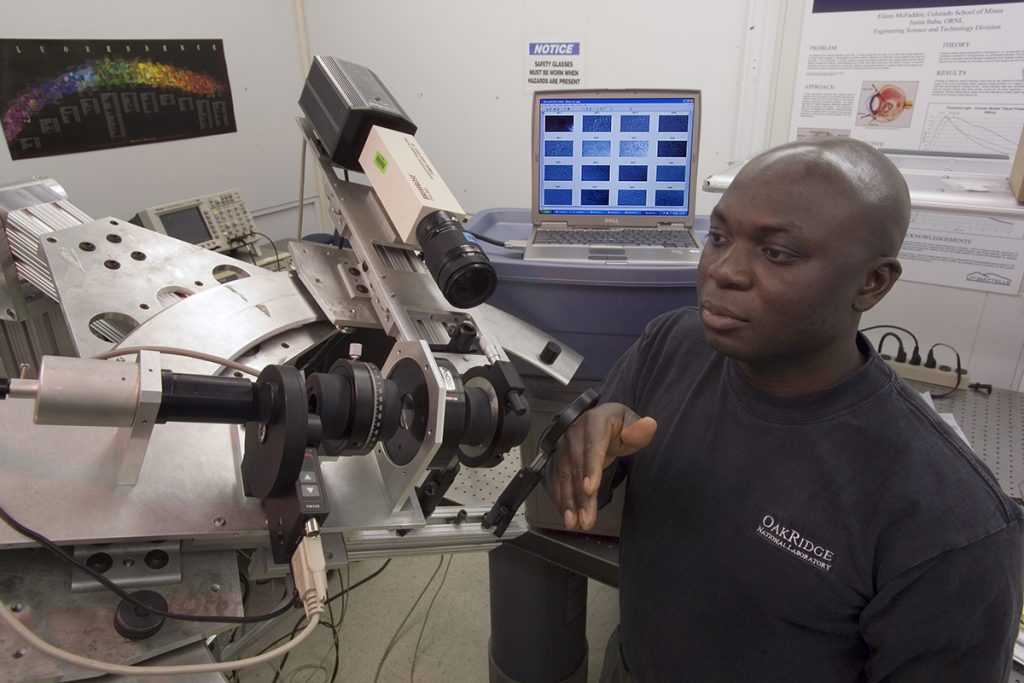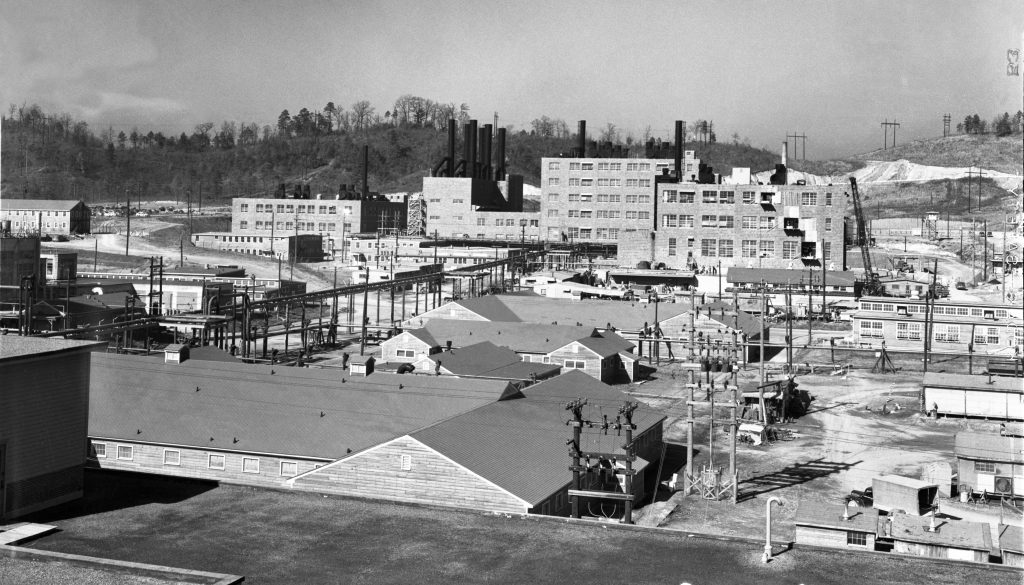“Nuclear medicine, nuclear energy, nuclear weapons. All of that goes back to Oak Ridge,” explains Denise Kiernan, bestselling author of The Girls of Atomic City. Oak Ridge, Tennessee has been a center for nuclear research since General Leslie Groves selected it as the Manhattan Project’s uranium enrichment site in 1942. Today, Oak Ridge is the home of many leading scientific and engineering research facilities, including Oak Ridge National Laboratory (ORNL).
The Atomic Heritage Foundation (AHF) has launched a new online interpretive program, “Oak Ridge Innovations,” to explore Oak Ridge’s legacies for science and society today. Available on AHF’s “Ranger in Your Pocket” website, “Oak Ridge Innovations” includes more than 30 video vignettes describing ORNL’s history and current research in fields such as energy, particle physics, computer science, and medicine. The program was developed in partnership with the Institute of Electrical and Electronics Engineers (IEEE) East Tennessee Section and funded by the IEEE Foundation. Featuring perspectives from current ORNL scientists and Manhattan Project veterans, the program illuminates Oak Ridge’s history and how the laboratory responds to some of today’s biggest challenges.
“This program connects the dots between Oak Ridge’s role in the Manhattan Project and its cutting-edge research today,” states AHF President Cynthia C. Kelly. “It will be a valuable educational tool for students and audiences around the world.”
“This symbiotic partnership between AHF and the East Tennessee IEEE Section has resulted in a resource for all. It wouldn’t be of the quality that it is without each other,” adds Austin Albright, the current Chair of the IEEE East Tennessee Section. “People who take advantage of the ‘Ranger in Your Pocket’ resources will come away with a greater and clearer understanding of the world changing technological innovations that took place in our former secret city and continue at the facilities born of the Manhattan Project to this day. IEEE is glad to show our commitment to remembering the technological innovations of the past as we actively work on the innovations of tomorrow.”
 The program begins with ORNL researchers describing why they chose to become scientists. Justin Baba (pictured, right), who grew up in Nigeria, has a family history of diabetes. “That was a huge motivation for me: what can we do to help diabetics?” he recalls. “I thought it’d be fun to do medical-related research that could have an impact on the lives of many people for many generations to come.” Stories from Baba and other scientists will encourage students to pursue their own interests in science, technology, engineering, and math.
The program begins with ORNL researchers describing why they chose to become scientists. Justin Baba (pictured, right), who grew up in Nigeria, has a family history of diabetes. “That was a huge motivation for me: what can we do to help diabetics?” he recalls. “I thought it’d be fun to do medical-related research that could have an impact on the lives of many people for many generations to come.” Stories from Baba and other scientists will encourage students to pursue their own interests in science, technology, engineering, and math.
Throughout the program, scientists discuss different global problems and how they work to solve them. One such issue is providing enough energy to meet the growing world population, which the United Nations projects will reach 9.8 billion by 2050. In one vignette, former ORNL director Thom Mason discusses the promise and limitations of renewable energy, nuclear power, and fusion power. “All three of those different potential energy sources for the future of humanity are elements of the research and development that goes on in the DOE [Department of Energy] labs today, including at Oak Ridge,” he explains.
ORNL supercomputers such as Summit, unveiled in 2018, contribute to this research mission. As nuclear engineer Kevin Clarno details, supercomputers are used to make nuclear reactors function more safely and effectively: “We’re able to create computer models that predict what is happening in a plant today. Understanding, in very high detail, what is happening, where is it happening. So that they’re operating safer; that they can increase the power they produce, without impacting the safety of the plants or the public at all.”
Supercomputer calculations are used in surprising ways. Gordon Fee, former manager of the Y-12 Plant, describes how Oak Ridge’s supercomputers designed skirts that improve the fuel efficiency of semi-trucks. “When you see an 18-wheeler go by you, look under the trailer, and you’ll see a skirt that hangs between the wheels. The fuel efficiency is raised somewhere between two and three percent. When you multiply that by the number of trucks on the road, you’re talking about a billion dollars’ worth of savings in fuel.”
 Oak Ridge’s history is marked by a tension between the peaceful uses of nuclear power and the threat posed by nuclear weapons. Sites like Y-12 (pictured, left, in 1946) remain part of the U.S. nuclear weapons complex. Mason elaborates on what former ORNL director Alvin Weinberg called the “Faustian bargain” of nuclear power: “The same technology platform that we use for generating 20 percent of our electricity in the U.S. and a growing fraction around the world can be repurposed for nuclear weapons in a way that could be destabilizing.” Mason discusses ORNL’s efforts to secure nuclear materials and ensure they are used only for peaceful purposes.
Oak Ridge’s history is marked by a tension between the peaceful uses of nuclear power and the threat posed by nuclear weapons. Sites like Y-12 (pictured, left, in 1946) remain part of the U.S. nuclear weapons complex. Mason elaborates on what former ORNL director Alvin Weinberg called the “Faustian bargain” of nuclear power: “The same technology platform that we use for generating 20 percent of our electricity in the U.S. and a growing fraction around the world can be repurposed for nuclear weapons in a way that could be destabilizing.” Mason discusses ORNL’s efforts to secure nuclear materials and ensure they are used only for peaceful purposes.
A major development at Oak Ridge after World War II was the production of radioactive isotopes that are now widely used in medicine. Fee notes the irony that some of the same equipment that produced enriched uranium for the Hiroshima atomic bomb later generated these isotopes. The program describes how doctors can use radioisotopes to treat and diagnose diseases, and highlights innovative research at ORNL into technologies to detect and combat Alzheimer’s, Parkinson’s, and cancer.
Like the development of medical isotopes, ORNL’s research into the effects of radiation grew out of the Manhattan Project. Dr. Liane Russell and her husband, Bill, conducted groundbreaking studies at ORNL’s “Mouse House.” One pivotal finding was a guideline to protect women who might be pregnant from irradiation by X-rays. “If you could schedule irradiation, it should be restricted to the first two weeks following a menstrual period,” Russell explains. “It went into the medical literature, and it’s still in use now.”
The program cautions that scientific advances can also be used for dangerous or unethical purposes. Denise Kiernan gives an overview of the infamous human radiation experiments at sites including Oak Ridge in the late 1940s, where a number of hospital patients were injected with plutonium without their consent. She remembers the first time she read the so-called “plutonium files” documenting the experiments: “That testing was something that I was really, really, bowled over and shocked by.” Much of the information about these experiments did not become public until the 1990s.
 Today, ORNL researchers pursue cutting-edge research in a variety of fields. Thomas Cormier leads the Large Hadron Collider Heavy Ion Group, which participates in experiments at CERN, the European Organization for Nuclear Research, to explore the physics of the early universe. Cormier details how teams of scientists collaborate: “When it all comes together and works, it’s really quite impressive that you can really get that many people moving in the same direction. It’s an exercise, really, in sociology as well as science.”
Today, ORNL researchers pursue cutting-edge research in a variety of fields. Thomas Cormier leads the Large Hadron Collider Heavy Ion Group, which participates in experiments at CERN, the European Organization for Nuclear Research, to explore the physics of the early universe. Cormier details how teams of scientists collaborate: “When it all comes together and works, it’s really quite impressive that you can really get that many people moving in the same direction. It’s an exercise, really, in sociology as well as science.”
Oak Ridge’s scientific research since the days of the Manhattan Project has a rich and complex legacy. Today, ORNL employees confront daunting challenges in areas such as energy, health, and national security, but scientist Eric Pierce is optimistic. “The discoveries that will come out into the future, given ORNL’s 75-year history, will be quite impactful,” he predicts.
AHF thanks the IEEE East Tennessee Section for their collaboration and the IEEE Foundation for their financial contribution to this project. The program was also supported by a generous donation by William K. Coors, and in part by a grant from the Daniel K. Thorne Intervention Fund of the National Trust for Historic Preservation. Special thanks to the ORNL scientists who contributed their insights to the program. AHF is very grateful to all of these partners for their assistance in exploring Oak Ridge’s history and legacies today.





